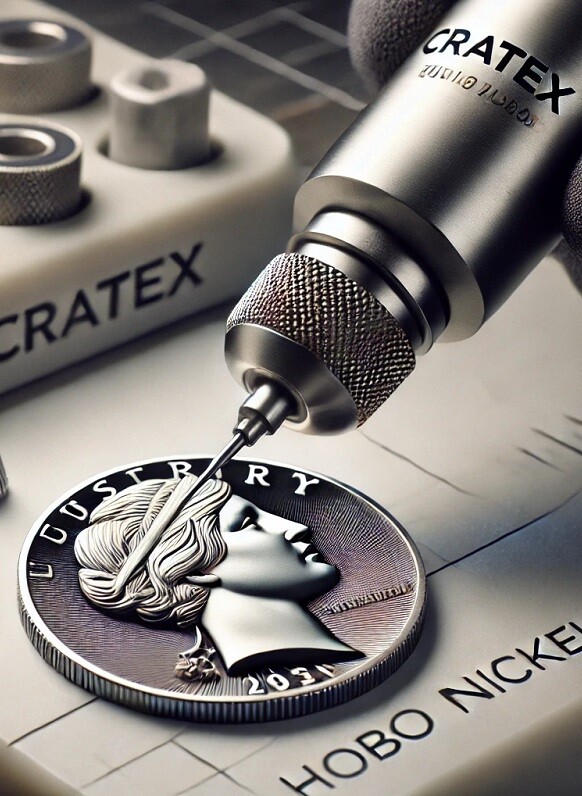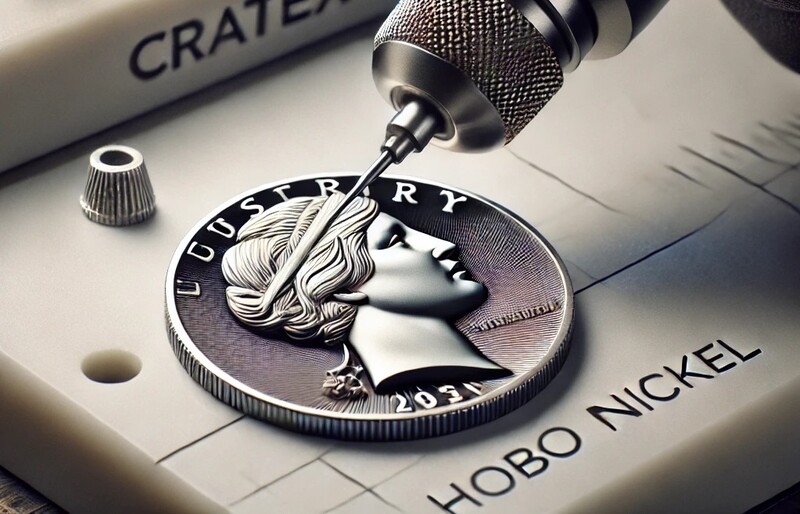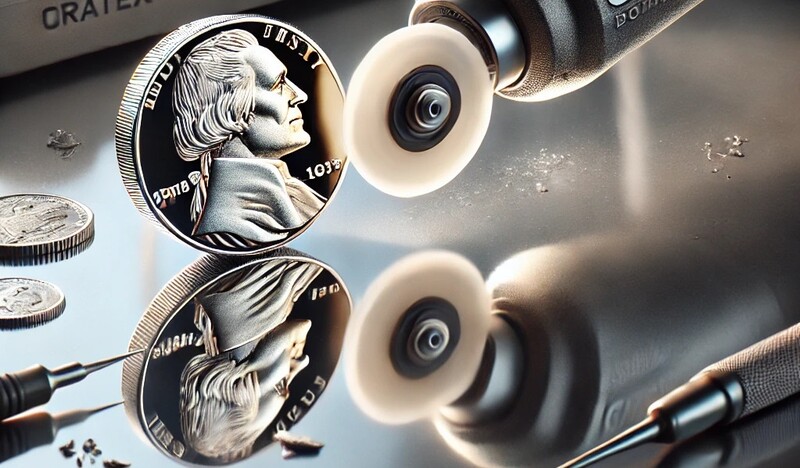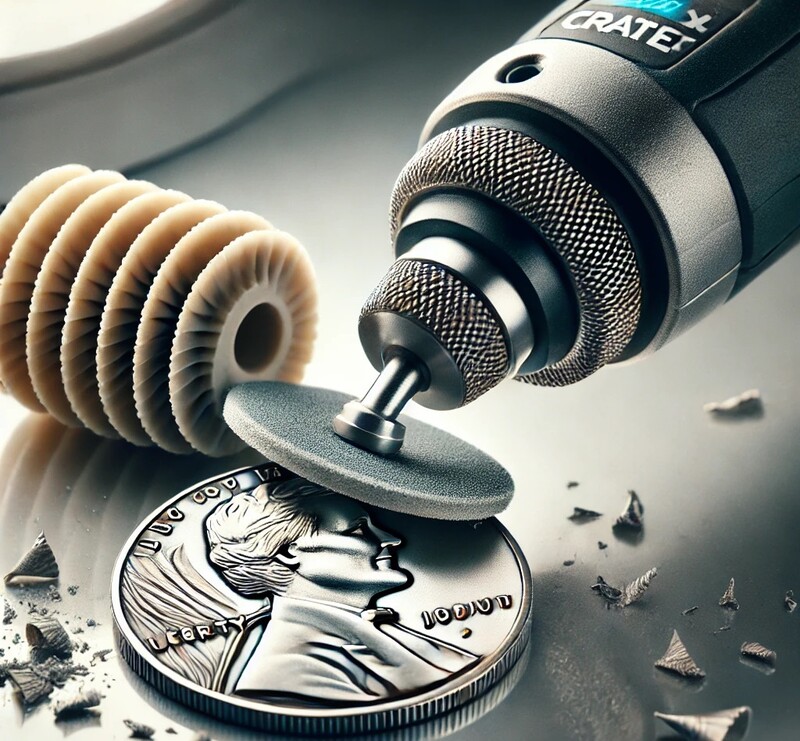Hobo Nickel – Remarkable Coin Art
Have you ever seen one of those cool carved coins with images of E.T., John Wayne or a skeleton chief? Maybe not, or maybe you have seen people do this, take coins and carve their own designs into the surface of a coin, but you never really wondered what it is and how it’s done exactly. Well, you should know that there is a whole special art world of hobo coins or hobo nickels out there that’s been around since the 18th century.
So. What is Hobo Nickel?
It is a creative and unique way to modify small-denomination coins by carving various shapes into their surface. The US nickel coin was favored by the hobo nickel artists primarily for its size and, therefore, the size of the surface that can be carved, its thickness and softness (with an exception of a couple of years around the WWII, the composition of a nickel coin remained unchanged since 1866 - 75% copper and 25% nickel). However, hobo nickel art doesn’t apply explicitly to nickel coins, but various other denominations as well, meaning that just about every coin can and has been carved at some point.
Are hobo nickels illegal?
The short answer: No.
The long answer: The U.S. Code determines fines and imprisonment for those who fraudulently alter or falsify “coins coined at the mints of the United States” and those who possess such coins, but since the purpose of altered hobo coins is purely artistic and not to commit fraud, it’s completely legal. You’re free to create your own designs and to sell the coins for prices you determine.
Why Hobo Coin?
There are quite a few theories how the name came into existence. The first theory is that the hobo coin got its name since it was a popular medium among actual hobos. It is believed that hobos began to appear after the American Civil War when a lot of war veterans got discharged. The term hobo dates back to around 1890 and it was used to describe a migrant or homeless worker traveler. One of the stories is that hobos used to earn about $1 a day for their work, so they took coins (usually nickels) and added fun designed in order to raise their value. They would then trade the modified coins for food or a place to stay, making the dollar last for a whole week or more. Nickels were easy to carve due to their size and plus, they had relatively low value. Quarters had a much larger surface, but were five-times more valuable, so modifying them was not an option for a homeless vagabond.
Others say that the name dates to the period of Great Depression, when a lot of unemployed and homeless men traveled through countryside in the pursuit of available sessional work. Same as the post-Civil War hobos, these men hopped into freight trains, traveled around and used which ever tools they found in their pockets to carve their designs and to exchange them for food or a place to stay.
Another story dates back to WWI when more than three million American solders passed through Hoboken, a city located in the state of New Jersey, which was then the main port for Expeditionary Forces. To pass their time, solders carved their designs into the nickels.
Other names for the art are “prisoner nickels”, “trench art”, “bum nickels” or they are referred to as “reworked” or “transformed”.
Click the icon to jump to the desired section
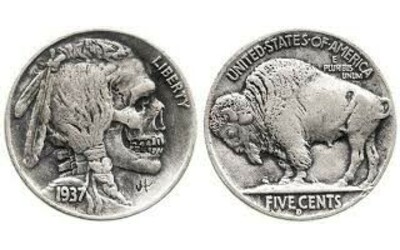
CHAPTER 1
A Short History of Coin Carving
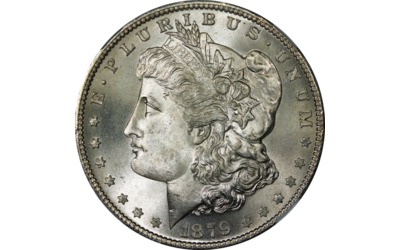
CHAPTER 2
Hobo Nickel: Pocket-Size American History
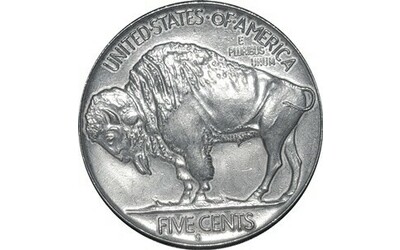
CHAPTER 3
Buffalo Nickel
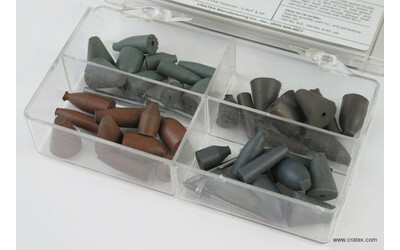
CHAPTER 4
CRATEX Hobo Coin Polishing Bits
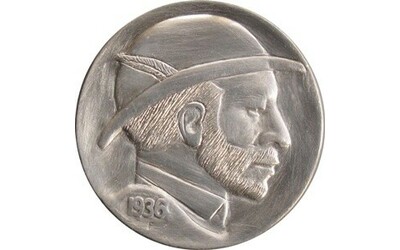
CHAPTER 5
How to Make a Hobo Nickel
A Short History of Coin Carving
CHAPTER 1
The hobo-style coin modification of coins dates back to at least 18th century if not sooner. The most common form found during the early 1850s was the “potty coin”, which was a modified silver coin depicting the Goddess of Liberty seating on a potty.
This was also the golden era for love tokens. Those were coins with one or both smooth sides, carved with initials, names, monograms, different scenes, etc. and often included into necklaces or bracelets. The craze for love tokens finally faded out in the beginning of 20th century.
Serious hobo nickel art started in 1913 when the Buffalo nickel entered circulation. Craftsmen began using various homemade tools to re-carve the Indian head. The most frequent theme was the standard design of a man with a derby, but there were also various other themes that appeared both on the front and the back (with back carvings being far rarer than the front ones). Some of the images that appeared on the front of the nickel were of other Indians, solders, women, Rabbis, clowns, and some of the themes that appeared on the back were animals, such as a turtle, a donkey or a buffalo, miniature man and box cars.
The art really took off during the Great Depression. Many were unemployed, so they spend a lot of their free time breathing their own designs into the coins, typically by using primitive tools such as nails, pocket knives, screwdrivers, pieces of metal, etc.
The period between 1940s and 1970s was a period of transition and important changes. Jefferson nickel gradually replaced the Buffalo nickel causing it to disappear almost completely from circulation by the end of 1970s, many new artists appeared, the style and the themes became modern, subjects more diverse, new techniques and tools, such as vibrating tools and power engravers, were introduced, color was added and so on.
Many old-school carvers continued their work on Buffalo nickels well into the 1980s. It was the time of standard hobo nickel design of a man wearing a rounded derby hat, with a beard, ear showing and a collar. More complicated variations included a cigar, cigarette, changed profile or some words added. It was also the time when many modern subjects entered the art, such as images of people of various occupations, famous people, etc. Once again, many new artists started to appear and produce carvings with non-traditional subjects, such as skulls, conquistadors or comic strip character Dick Tracy.
During the 1990s more modern subjects appeared, such as various cartoon characters, withes and animals, and it is also the time when serious hobo coin professionals appeared, producing superior quality carvings. They stirred away from producing a great number of lower-quality carvings per year to producing fewer coins that had higher artistic quality and value.
Nevertheless, the mass production of modern lower-quality carved coins continued well to this day, so $5 coins are expected to surpass the old hobo nickels in number within the next few years.
Hobo Nickel: Pocket-Size American History
CHAPTER 2
Due to the low price and fact that you can find just about anything engraved, hobo coins can be a pretty neat birthday present. However, there is a different side to these coins, as many of them represent a pocket-size piece of American history that you can always carry with you. Artists modify these small pieces of history coins by keeping their original concept, but by adding their own comments or turning them into history moments of another dimension.
Here are some of the most famous coins with that tell a few interesting stories.
Commemorating Peace – The Peace Dollar
The Peace Dollar was first produced in December 1921, the original purpose of the Peace Dollar was to commemorate the post-WWI peace. The idea about commemorating the peace came from Farran Zerbe, an active promoter of numismatics and once the president of the American Numismatic Association (ANA). The Commission of Fine Arts held a competition for the design of the new silver dollar and invited eight distinguish sculptors to take part. An Italian-American sculptor named Anthony DeFrancisci was the youngest participant who ended up winning the competition and taking home the $1,500 cash prize. DeFrancisci used his wife as the model to represent something American with an intention to capture the spirit of the country which was defined by the intellectual speed, vitality and vigor. The design ended up being his most famous one.
The front of the coin depicts the left profile of Miss Liberty wearing a diadem with spikes, quite similar as seen on the Statue of Liberty. The letters “LIBERTY” are above, and the date and “IN GOD WE TRUST” is below. The back side depicts an eagle perched on a rock that has a laurel branch sticking out and letters “PEACE” written on the stone. The sun rays can also be seen emerging from the bottom right, as the eagle proudly stands above them. Many argue that the Peace Dollar is the most beautiful coin ever produced.
Absolute Beauty – The Walking Liberty Half Dollar
Then there is the Walking Liberty Half Dollar. The design of the coin has been a favorite among the numismatists ever since it came out and it many consider it one of the most beautiful coin motifs of all time. The design of a Germany-born American sculptor named Adolph Alexander Weinman was chosen as the new motif of the half dollar in 1916.
The front of the coin depicts the Miss Liberty waking toward the sun or the dawn of the new day with her right arm outstretched. She’s carrying a bundle of laurel and oak branches in her left hand which represents civil and military glory. Her cape is flowing in the wind behind her. The letters “LIBERTY” are written above, with “IN GOD WE TRUST” on the lower right and the date below. The back side depicts an eagle with wings unfolded, perched on a rocky crag with a pine branch, the symbol of strength and America, growing from it. The eagle looks fearless and conscious of his power.
Morgan Dollar
Another sweet piece of American history is the Morgan Dollar, George T. Morgan’s creation that has become America’s most famous and most collected silver dollar. The reason lies in it beautiful design, 90% silver content, its size and high mintages (Philadelphia, San Francisco, Denver, New Orleans and Carson City).
The coin was minted from 1878 to 1904 and again in 1921 (replaced by the Peace Dollar) and was the first silver dollar minted since the previous Seated Liberty design which ceased after the Coinage Act of 1973 was passed. The act demonetarized silver, so in response to the difficult economic condition during the 1870s, the Congress passed the Bland-Alisson Act in 1878 that required the government to purchase large quantities of silver and start producing silver dollars. This way the dollar denomination was restored once again, and the Morgan Dollar was born.
As for the design, Morgan wanted to use an American woman to depict Liberty and not the usual imaginary Greek-style figure. His friend and artist Thomas Eakins suggested Anna Willes Williams as the model, a teacher and a philosophical writer from Philadelphia. Eakins knew her father and after introducing her to Morgan, he became so impressed with her profile that he noted that it’s the most perfect profile he had seen in both England and America. Although Miss Williams wanted to remain anonymous, her identity was discovered shortly after the dollar was released, so she had difficulties dealing with her being famous.
Read more about the nickel cherished the most among the hobo coin artists, the Buffalo or Indian Head Nickel, in the next chapter.
Buffalo Nickel
CHAPTER 3
Buffalo nickel or "buffalo head nickel" is what usually comes to mind when hobo nickels are mentioned. It's sort of its trademark host coin. First introduced in 1913, buffalo nickel was minted every year until 1938 with a few exceptions: 1922, 1932 and 1933. Over 1.2 billion coins were struck in Denver, San Francisco and Philadelphia Mints before the series ended. If the coin was produced in Philadelphia, it will have no mint mark. If it was produced in Denver it will have "D" or "S" for San Francisco on the back of the coin below the words "FIVE CENTS".
The coins with large, thick Indian Head profiles in the front and the buffalo in the back instantly became popular among talented carvers and newcomers who got attracted by the new radical design of the coin. The artists got a much larger surface for their art, as the Buffalo nickel was a larger coin and the depicted Indian Heads occupied five-sixths of the coin surface. Moreover, large heads were male, which means that besides being larger, they had coarser features which opened a whole new world of alternation possibilities.
The date on the coin is not crucial, but it’s preferable if the coin has a date. The “LIBERTY” letters are also not crucial but are preferable. The collectors are always more interested in the quality of the carving, and the most desirable attributes are clean and smooth fields, deep carving, raised or pushed metal, unusual subjects and altered facial features.
There are a lot of valuable or famous buffalo nickels, but we decided to mention four well-known examples that you should know about.
1913 Buffalo Coin – Shift Away from Liberty Head
In 1913 the US mint replaced the Liberty Head nickel with the Indian Head or the Buffalo nickel, and two types of buffalo nickels were produced that year: type one, that had "FIVE CENTS" written on a mound of dirt on which the buffalo stands, and type two, with "FIVE CENTS" written lower into the design below a straight line that replaced the hill. The reason the hill was replaced with a straight line is that the coins wore too easily as most of the design was raised above the rim. This is why the early 1913 coin is the only buffalo nickel that is recognizable without the date.
The coins were produced in all three US mints while the 1913-S type 2 coin is the rarest.
3-legged Buffalo Nickel – The Most Famous Error Coin
The three-legged 1937-D buffalo nickel is a true classic. It is one of the most famous and important coins of the 20th century that has fascinated collectors and artists for over three generations. The name comes from the back of the coin that features the buffalo that is missing its right front leg. The stump and the hoof are there, but the entire leg is missing.
The missing leg was caused by inadequate attempt to repair a damaged die leaving that portion completely polished off. The coins escaped into circulation before the inspectors at Denver Mint noticed the mistake.
Since these coins can be worth a lot of money, one must be on the lookout for counterfeits made by removing the leg from a normal 1937-D buffalo nickel. There are a few ways to determine if the coin is a counterfeit and one them is to look for an imperfection that looks like a stream of water coming out of the buffalo's belly. If it's there, the coin is the real deal.
1935 Buffalo Nickel - Double Die Reverse
The 1935 buffalo nickel is also known as the doubled die reverse coin. A sloppy workmanship and improper alignment of the master hub resulted in the doubled impression of the back of the coin. Specifically, the wordings "FIVE CENTS" and "E PLURIBUS UNUM" appear doubled.
This is the only buffalo nickel coin with significant doubling on the back side and is therefore very valuable. Most of the coins entered the circulation, so the uncirculated ones are sold for a premium price. For example, a 1935 buffalo nickel, grade PCGS MS-65 was sold in 2007 at Rarities Coin Auction for $104,650.
1936 Buffalo Nickel – Big Year for Buffalo Nickel
1936 was a big year for buffalo nickels as it is the most minded year in the series. Almost 119 million coins were produced and used heavily and widely in circulation. On top of this, the details on the coin were of high-design, so most of the coins today are in average to below-average condition. Since so many coins were produced and had little value, they became one of the most popular coins used by the hobo coin artists.
Although extremely rare, uncirculated coins still exist, but even the high-grade pieces are cheaper than the high-grade coins minted between the early to mid 1920s. One of the famous and rare examples is the 1936-D polished reverse die with 3.5-legged buffalo. While the 1937-D has the three-legged buffalo on the back, 1936-D has a buffalo with a partially polished-off front right leg. Currently, only twenty are known to exist.
Although not worth a lot of money, the 1936 buffalo nickel is worth holding on to. Its worth has been slowly increasing over the years due to its growing popularity among collectors and slow increase in scarcity.
Buffalo Nickel Value
Buffalo coins without the date have no value to the collectors, as the value cannot be determined without the date. Such buffalo coins are worth about 15 cents per piece as hobo coin artists, jewelers and others use them for various purposes.
Coins with partial dates are worth more than the dateless nickels. Depending on the digits showing, partial-date coins are worth from 50 cents if two or three digits are seen to 20% of the market value if the last two or three digits are seen.
If the coin is worn, it is considered circulated, and if there is no evidence of wear, it is considered uncirculated. Naturally, uncirculated coins are worth more than the circulated ones, and you can determine the exact grade of a buffalo nickel with the help of a professional numismatist or a coin dealer.
Some buffalo coins in any condition are worth much more than other common pieces. The rarest buffalo coins have the greatest value. The rarest of them all would be the 1916/16 overdate ($1200 in average circulation condition), 1918 over 17-D (at least $800), 1937-D "3-legged" buffalo coin.
Only a few three-legged buffalo coins survived in new condition up to this day. The ones that entered the circulation are worth between $400 and $1000, depending on the condition, and uncirculated coins can go up to $20,000 or more, as they are quite rare.
Type 2 of the 1913-S buffalo coin belongs to the scarce coins and is worth about $250; scares dates also include type 2 of the 1913-D (about $80) and the 1921-S (about $40). Of course, the exact buffalo nickel worth is determined based on the date, mint and the condition. So, for example, the 1913-D type 2 uncirculated coin, grade NGC MS-68 was sold for $143,750 in 2008 at the January 2008 Orlando Rarities Sale.
Almost all coins produced before 1929 are very scarce in uncirculated condition. The prices can range from $10 for 1938-D, which is the most common date, to extraordinary prices for a 1926-S buffalo coin in a perfect condition.
For example, the 1926 San Francisco Mint yielded only 970,000 buffalo coins, which makes the 1926-S the lowest mintage buffalo coin ever. A very few coins were therefore saved from entering the circulation, so the high-quality coins are worth more than $300,000 which coin collectors are more than willing to pay.
CRATEX Hobo Coin Polishing Bits
CHAPTER 4
When preparing the coin surface for carving, some artists like to go through various polishing grits progressively, but in case you don't have patience, or you think you can do a good job faster, you can consider getting a hand rotary tool, such as the Dremel or CRATEX CTX-800 Rotary Handpiece and some abrasive mounted points.
CRATEX abrasives are made of silicon carbide, bonded with premium quality synthetic rubber. They are the perfect tools for light grinding and metal finishing operations, such as smoothing, cleaning, smoothing and polishing and they will fit your Dremel rotary tools perfectly.
They come in four different grit types: coarse, medium, fine and extra-fine. The grit grade that you'll use will the depend on the type of the nickel metal and the amount of metal that you would like to remove. For smoothing down coin surfaces, use coarse to fine grits and for removing carving scratches use extra fine grits and smallest diameters.
CRATEX Mounted Points
CRATEX abrasive points are available in three different shapes: bullet, cylinder and tapered, and various diameters: 9/32", 5/16", 1/8", 3/8", 5/8", 1/4" and 1/2".
CRATEX online store sells abrasive points in boxes of 100 pieces and mandrels are sold separately in packs of 10. In case you never tried our points before, we suggest getting our Mini Test Point Kit No. 167 for an amazing price that includes shipping and handling fees!
CRATEX Small Mounted Wheels
Two types of CRATEX abrasive small wheels are available: tapered and straight edge. They come in boxes of 100 pieces and are available in following diameters: 3/8", 5/8", 7/8" and 1".
CRATEX also offers a handy Mini Test Wheel Kit No. 107 for all of you that are not ready for a 100 pieces box and would like to give our mounted wheels a try!
How to Make a Hobo Nickel
CHAPTER 5
Step #1: Get ‘em Nickels!
The first thing you’ll need to make a hobo nickel is – a nickel. If you are just starting out, just get any nickel you can get your hands on. Before putting your carving skills to test on a valuable coin, such as the Buffalo nickel, it’s better to start with a regular nickel you probably have in your pocket or lying somewhere around the house. Jefferson nickels or no date nickels would be a good place to start (you wouldn’t want to ruin a valuable coin, now would you?). The no date nickels can be easily found on eBay and they are quite cheap as they have almost no value at all from a collecting standpoint.
Step #2: Get Some Engraving Tools
As described in the previous chapter, gravers are small, hard chisels you’re going to use to carve your designs into metal surface of your coins. The recommended optimal tools would be the flat graver which a square-shaped tip tool used to flatten the background and to add depth, and a V graver which is a triangle-shaped tip tool used to create lines.
You can use your bench grinder to shape your V-shaped gravers. Important is to get an 80-90-degree angle between the three flat sides below the cutting point, so that your tool has a triangle shape. The angle between the point and the bottom of each flat side should be around 45 degrees. Make sure you keep your sides as flat as possible, as smooth sides provide a sharper edge and a better finish.
Beginner's tip: Use a "bridge" - small metal ring with a handle that you can easily create on your own. You should use it until you establish control over the gravers just by pushing them with your hand. To use it, place the metal loop on your coin, place the graver on the marked line and use the bridge as a lever. Simply move the lever and have the graver follow it along the line
Step #3: Secure Your Nickel
To get some work done, you’ll need to have a nickel holder. It will help you free your hands and keep the hobo coin in place.
There are some nice ball vises designed specifically for nickel-jobs, but they can be quite pricy. The easiest DIY way would be to get a wooden dowel or a rob and to attach the coin on its top with some melted glue. As mentioned previously, you'll also need a vice to keep the dowel erected and steady, and vice is something that you probably already have in your garage.
Step #4: Practice Until You Get It Right
Perhaps it won’t be perfect right away, but hey – that’s why you’ve bought a whole bag of coins! You’ll need to get a sense the softness of the nickel and the way it cuts. Practice with creating straight and curvy lines, see if your tools need adjustment, get a sense of the pressure you’ll need to apply and the angle between your graver and the coin surface; see how existing features can be adjusted, how new ones can be added. Sometimes artists carve previously polished surfaced, and sometimes incorporate the existing elements into their final work of art. Play with those options, find out what works for you best.
Step #5: It’s Show Time!
Since the classic hat-beard hobo nickel design is the easiest to make, we suggest you start with that one. A good beginner tip would be to draw the outlines of your design on the nickel surface as that way you’ll clearly see what needs to be carved (master hobo coin artists don’t need sketches, and pretty soon you won’t either!).
Start from the borders and work your way inwards – remove all unnecessary parts of the old design with a flat graver and make sure the new flat areas are as smooth as possible, as it will save you from additional work later.
Start with the largest feature of the new design and combine your flat gravers to remove the material and V-graver to draw lines. Be very careful in case your nickel has letters, because you probably won’t be able to fix them in case you mess them up.
Beginner's tip: Don't cut deep at the beginning. It's better to cut shallow and then go back and cut again until you get the desired depth.
Step #6: Background Time
After you finish the center-piece, it’s time to remove the tool marks from the background. There are two ways to do this: with a flat graver, in case you are a careful and precise, or with an extra fine grit sandpaper.
If you want to make your work stand out more, you can color the background. Some people use a permanent marker, but it’s not a permanent, so the paint will get wiped off in case the coin is being handled too much. Other people use cold bluing solution or pain for a more permanent effect.
Step #7: Sign It and Kiss It!
The last step would be to sign your coin and that’s something that needs practice on its own. But don’t worry, here’s a small tip until you start signing your coins like a calligrapher – just put your signature on the back of your coin and the problem is temporarily solved!
Now grab another coin and do that all over again!
